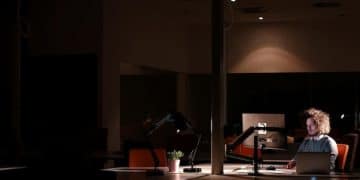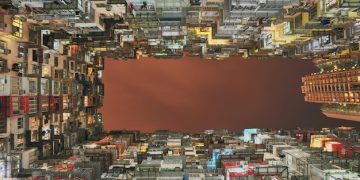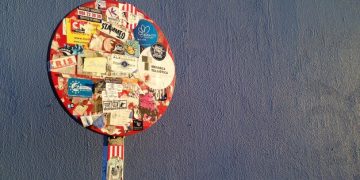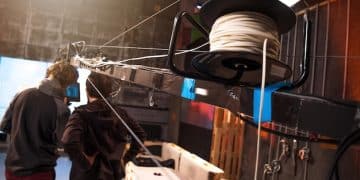The Editor’s Craft: How Cutting and Pacing Shape Movies
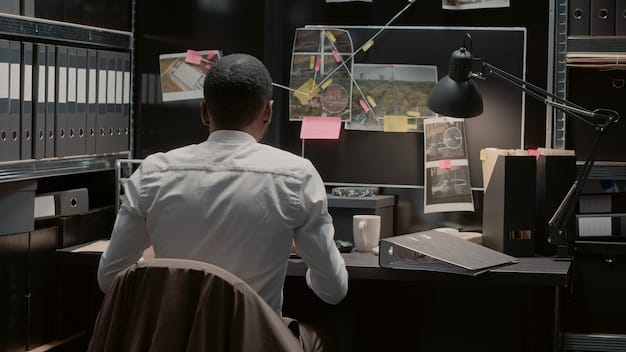
The role of the editor is crucial in shaping a movie’s final form through the art of cutting and pacing, influencing storytelling, emotional impact, and overall viewer experience by strategically assembling footage and controlling rhythm.
Have you ever wondered how raw footage transforms into a compelling movie? The magic lies in the skilled hands of the editor. The role of the editor: how cutting and pacing shape a movie is a vital, yet often unseen, force in filmmaking, crafting the rhythm, flow, and emotional impact of the story.
Understanding the Editor’s Role in Filmmaking
The editor’s role in filmmaking extends far beyond simply stringing scenes together. It’s a complex process involving artistry, technical skill, and a deep understanding of storytelling. Editors are responsible for crafting the narrative, controlling the pace, and shaping the emotional impact of a film.
From selecting the best takes to trimming footage, adding transitions, and incorporating visual effects, the editor shapes the final product that audiences see on screen. Their creative decisions can make or break a film, transforming raw footage into a captivating cinematic experience.
The Editor as Storyteller
At its core, editing is about storytelling. Editors work closely with directors to shape the narrative, clarify themes, and emphasize key moments. They use their skills to build tension, create suspense, and evoke emotions in the audience.
By carefully selecting and arranging scenes, editors can alter the pacing of a film, speeding up or slowing down the action to create the desired effect. They can also use cuts and transitions to create a sense of continuity, connect disparate scenes, or emphasize thematic elements.
Technical and Artistic Skills
Effective editing requires a combination of technical proficiency and artistic vision. Editors must be skilled in using editing software, understanding the nuances of film grammar, and applying visual effects. They also need a sharp eye for detail and a creative sensibility to transform raw footage into a polished final product.
- Understanding different types of cuts and transitions
- Mastering pacing and rhythm
- Effective use of visual and sound effects
- Storytelling through editing
In conclusion, the editor’s role is critical in shaping a film’s narrative and impacting the viewing experience. Their technical expertise and creative vision blend seamlessly to create a cohesive and compelling story.
The Art of Cutting: Techniques and Styles
Cutting, or film editing, involves various techniques and styles to piece together a movie. Each choice, from the type of cut to the duration of a shot, contributes to the film’s rhythm, tone, and overall impact.
Editors employ different cuts, transitions, and stylistic choices to craft a unique look and feel for the film.

Types of Cuts
There are various types of cuts used in editing, each serving a specific purpose. A straight cut is the most basic, seamlessly transitioning from one shot to the next. A jump cut creates a jarring effect by removing a section of the shot, often used for stylistic effect.
A match cut creates a visual link between two different shots, often used to connect them thematically. A cross-cut alternates between two different scenes, creating a sense of parallel action or tension.
Transitions
Transitions are used to smoothly connect two different shots or scenes. Fades gradually transition from one shot to another, often used to indicate a change in time or location. Dissolves blend two shots together, creating a sense of continuity.
Wipes use a visual effect to “wipe” one shot off the screen and reveal another. Effects can be used to introduce novelty and can often enhance the storytelling.
Stylistic Choices
Editors also make stylistic choices that contribute to the overall look and feel of the film. Fast-paced editing involves quick cuts and energetic transitions, often used in action movies. Slow-paced editing uses longer takes and smoother transitions, often used in dramas.
- Quick cuts for action and suspense
- Long takes for drama and character development
- Use of montages to compress time or convey information
In summary, the art of cutting encompasses a range of techniques and creative choices. These decisions directly impact a film’s aesthetic and narrative rhythm.
Pacing Strategies: Controlling the Movie’s Rhythm
Pacing is the rhythm and tempo of a film, influencing how the audience perceives the story’s speed and emotional intensity. Effective pacing keeps viewers engaged, while poor pacing can lead to boredom or confusion.
Editors use various techniques to control a movie’s pace, including varying shot lengths, cutting on action, and using music to generate anticipation.
Varying Shot Lengths
One basic strategy is to vary the length of shots. Longer shots can create a sense of calm or contemplation, while shorter shots can build tension and excitement. Editors strategically alternate between shot lengths to keep the audience engaged.
In a suspenseful scene, quick cuts and short shot lengths, often lasting only a few seconds, generate a feeling of urgency and anticipation.
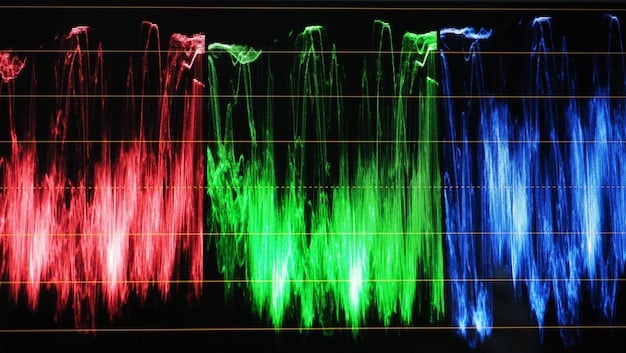
Cutting on Action
Cutting on action involves transitioning from one shot to another at the moment of movement, giving a fluid and seamless experience. Editors smooth the momentum by transitioning during significant actions, drawing the audience further into the scene.
For example, cutting from a character reaching for a door handle, to that door opening on the next shot, creates a dynamic flow, keeping viewers absorbed in the plot.
Music and Sound
Music and sound are powerful tools for controlling the pace of a movie. A fast-paced score with rhythmic beats can create a sense of energy and excitement, while a slow, melancholic melody can evoke sadness or reflection.
- Using music to heighten emotional impact
- Sound design to build tension
- Strategic pauses and silences
Editors synchronize music cues and sound effects, enhancing the desired emotional response and guiding the viewer’s perception of time and intensity, ultimately directing the narrative journey.
In conclusion, mastering pacing strategies involves artful control over shot lengths, action-based transitions, and the emotive power of sound.
Impact on Storytelling: Shaping Narrative Through Editing
Editing has a profound impact on storytelling, shaping the narrative arc, constructing character development, and revealing themes. Editors mold the raw footage into a cohesive and meaningful narrative.
Editors manipulate plot progression and structure and give profound depth to characters, giving viewers a rich cinematic experience.
Building Tension and Suspense
Editors use techniques to build an emotional response and anticipation. Strategic cuts, unexpected transitions, and carefully timed reveals all combine to heighten audience engagement.
Editors carefully control when and how information is presented, creating a captivating viewing experience.
Character Development
Effective editing is vital in constructing character development. Selectively presenting defining moments, interactions, and internal reflections, editors craft deep characters that viewers connect with emotionally.
A well-edited montage can summarize a character’s backstory, while a carefully placed close-up can reveal their innermost thoughts and feelings.
Revealing Themes
Editing is a powerful tool for revealing themes. The use of symbolism, recurring motifs, and thematic juxtapositions may underscore important concepts and messages.
- Editing rhythm to convey thematic shifts
- Recurring images to reinforce symbolic meanings
- Juxtaposition of scenes to highlight contrasts
In summary, editing plays a transformative role in the narrative, shaping the story, defining characters, and emphasizing themes, ultimately enriching the audience’s experience and understanding of the film.
Common Editing Mistakes and How to Avoid Them
While editing is a crucial part of filmmaking, there are common mistakes that novice editors should avoid. These errors can detract from the story, distract the audience, and undermine the overall quality of the film.
Whether it’s bad pacing, jarring jump cuts, or inconsistent storytelling, avoiding these errors can make a substantial difference in the result of any film project.
Bad Pacing
Poor pacing is one of the most frequent editing mistakes. It can lead to audience boredom. Scenes that linger too long or cuts that feel abrupt can disengage viewers.
Knowing when to speed up or slow down a sequence, is essential to maintaining viewer involvement and giving a cinematic rhythm.
Jarring Jump Cuts
Jump cuts that lack purpose can disrupt the flow of a scene and disorient the audience. They should be used intentionally, often for stylistic effect.
Employ jump cuts skillfully, or combine them with other transitions, ensuring they augment rather than undermine the story’s flow.
Inconsistent Storytelling
Inconsistent storytelling can confuse audiences. Jumps in the logical sequencing of events, missing context, or unclear motivations can ruin the narrative.
- Making sure scenes flow logically
- Maintaining character consistency
- Creating a rhythm that keeps the audience engaged
In conclusion, steering clear of typical editing errors helps beginner editors improve their film projects. Focusing on keeping a constant pace, utilizing purposeful transitions, ensuring consistent storytelling helps to create a compelling movie.
The Future of Film Editing: Technology and Trends
The evolution of film editing continues, driven by technological advancements and shifting creative trends. From AI-assisted editing tools to virtual reality storytelling, the future of film editing holds exciting possibilities for filmmakers.
New technologies will facilitate creative expression and production efficiency, changing how movies are envisioned, produced, and enjoyed.
AI-Assisted Editing
Artificial intelligence (AI) is increasingly being used in film editing to automate repetitive tasks, streamline workflows, and enhance creative decision-making. AI algorithms can analyze raw footage, identify key moments, suggest edits, and even generate visual effects.
With developments in AI, editors can focus on creativity, story, and emotional elements, refining the viewing experience.
Virtual Reality Storytelling
Virtual reality (VR) is an immersive medium that presents new storytelling challenges and possibilities for film editors. VR films require editors to create seamless, unbroken experiences that allow viewers to explore the narrative space.
Collaborative Editing
Collaborative editing platforms are becoming increasingly popular. Cloud-based platforms allow multiple editors to work on the same project simultaneously, regardless of their location.
- Enhancing teamwork efficiency
- Real-time feedback and revisions
- Greater accessibility to resources
In conclusion, the future of film editing presents an attractive mix of technology integration, immersive storytelling, and collaborative work environments, influencing the next generation of films and filmmakers.
| Key Element | Brief Description |
|---|---|
| 🎬 Editing | Shapes films through cutting, pacing, and transitions. |
| ⏱️ Pacing | Controls rhythm using shot lengths and music. |
| ✂️ Cutting Techniques | Includes straight, jump, and match cuts to influence rhythm. |
| 🎵 Sound & Music | Creates mood and enhances emotional impact. |
FAQ
▼
A film editor assembles raw footage into a cohesive movie, choosing the best shots, arranging scenes, and adding transitions. They work closely with the director to shape the story’s pace and create the final product.
▼
Pacing is essential as it controls the rhythm and tempo of the film to manage audience engagement and emotional response. Effective pacing helps a viewer be invested, while bad pacing causes disinterest.
▼
Cutting techniques include straight cuts, jump cuts, match cuts, and cross-cuts. Straight cuts provide seamless transitions. Jump cuts create intentional breaks. Match cuts connect scenes, and cross-cuts show parallel actions.
▼
Editing helps build character development. Carefully selected moments, interactions, and reflections can provide profound depth for characters. This makes it easier for the audience to connect with them.
▼
Typical editing errors include bad pacing, random jump cuts, and inconsistent storytelling. Avoiding these mistakes involves keeping the balance and flow consistent, ensuring scenes evolve logically, and character development makes sense.
Conclusion
In conclusion, the role of the editor is pivotal in shaping a movie’s storytelling, pacing, and overall quality. Through skilled cutting, the strategic use of pacing techniques, and careful attention to detail, editors transform raw footage into a compelling and immersive cinematic experience that captivates audiences worldwide.

